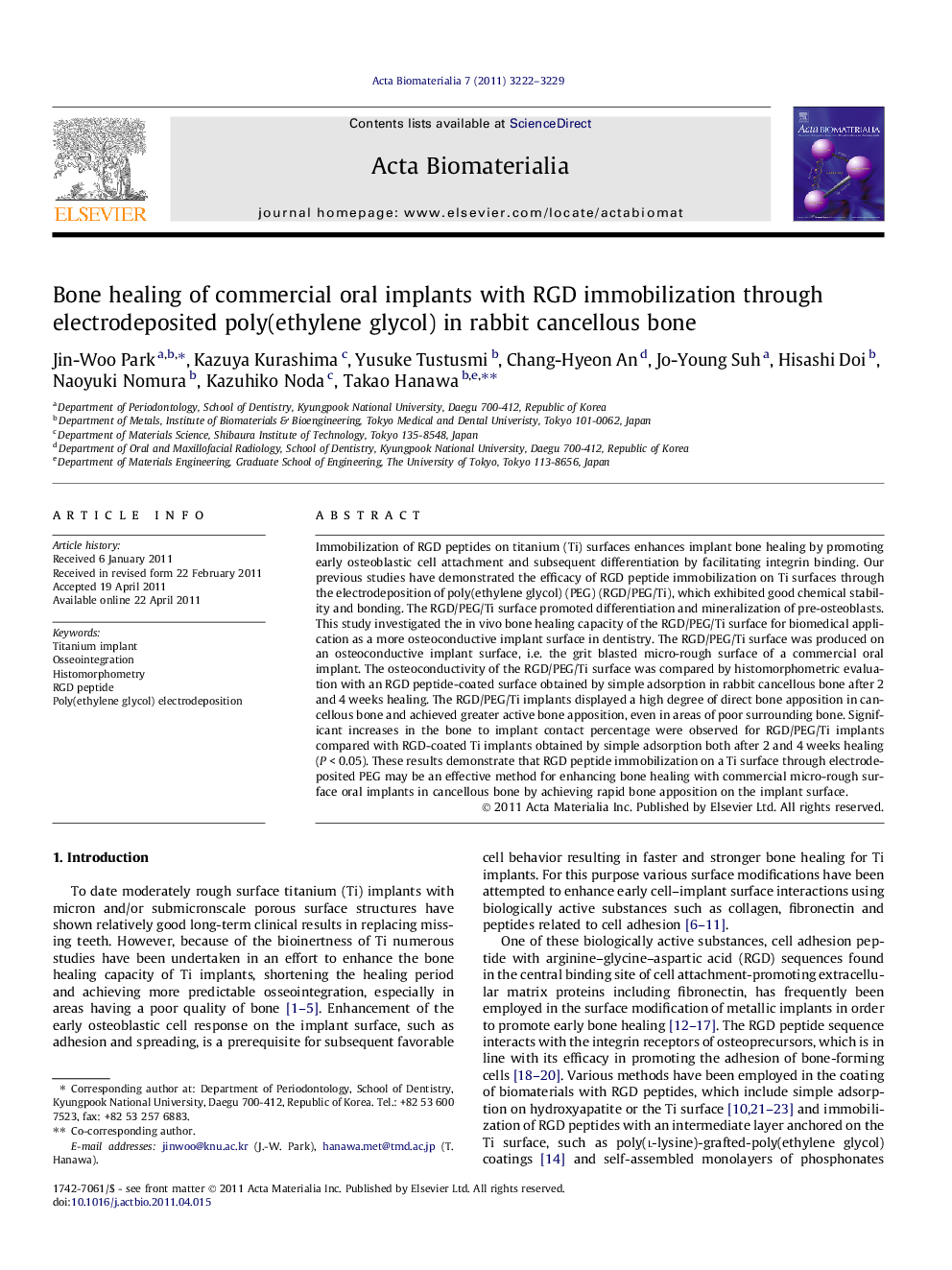| Article ID | Journal | Published Year | Pages | File Type |
|---|---|---|---|---|
| 1025 | Acta Biomaterialia | 2011 | 8 Pages |
Immobilization of RGD peptides on titanium (Ti) surfaces enhances implant bone healing by promoting early osteoblastic cell attachment and subsequent differentiation by facilitating integrin binding. Our previous studies have demonstrated the efficacy of RGD peptide immobilization on Ti surfaces through the electrodeposition of poly(ethylene glycol) (PEG) (RGD/PEG/Ti), which exhibited good chemical stability and bonding. The RGD/PEG/Ti surface promoted differentiation and mineralization of pre-osteoblasts. This study investigated the in vivo bone healing capacity of the RGD/PEG/Ti surface for biomedical application as a more osteoconductive implant surface in dentistry. The RGD/PEG/Ti surface was produced on an osteoconductive implant surface, i.e. the grit blasted micro-rough surface of a commercial oral implant. The osteoconductivity of the RGD/PEG/Ti surface was compared by histomorphometric evaluation with an RGD peptide-coated surface obtained by simple adsorption in rabbit cancellous bone after 2 and 4 weeks healing. The RGD/PEG/Ti implants displayed a high degree of direct bone apposition in cancellous bone and achieved greater active bone apposition, even in areas of poor surrounding bone. Significant increases in the bone to implant contact percentage were observed for RGD/PEG/Ti implants compared with RGD-coated Ti implants obtained by simple adsorption both after 2 and 4 weeks healing (P < 0.05). These results demonstrate that RGD peptide immobilization on a Ti surface through electrodeposited PEG may be an effective method for enhancing bone healing with commercial micro-rough surface oral implants in cancellous bone by achieving rapid bone apposition on the implant surface.
